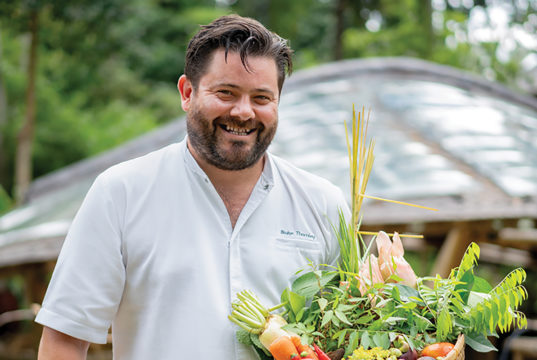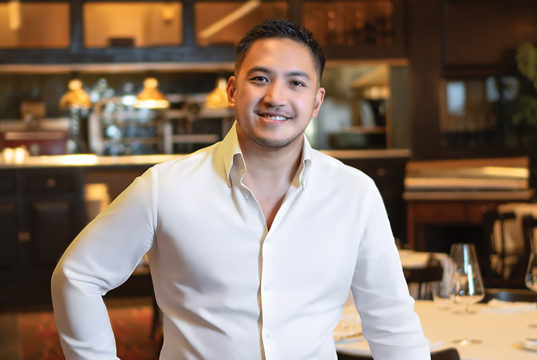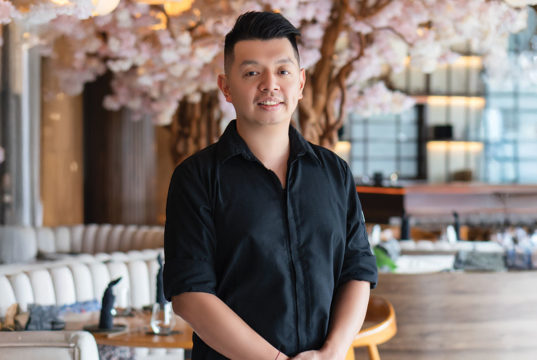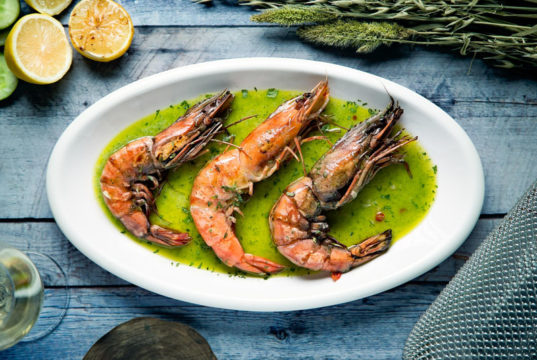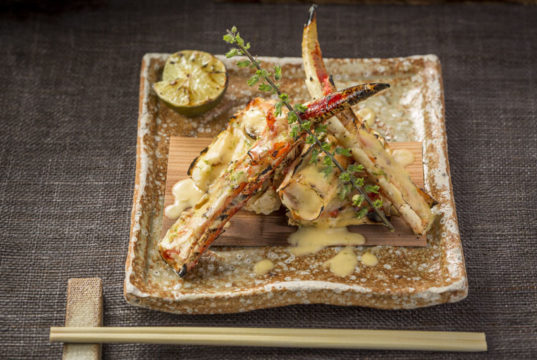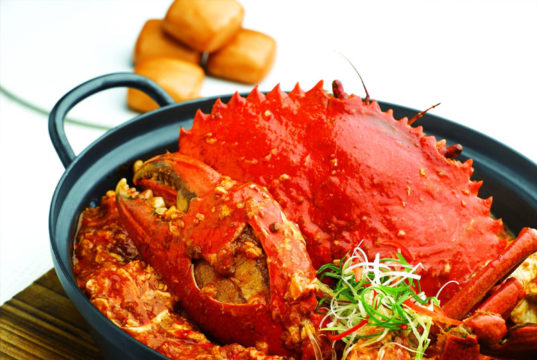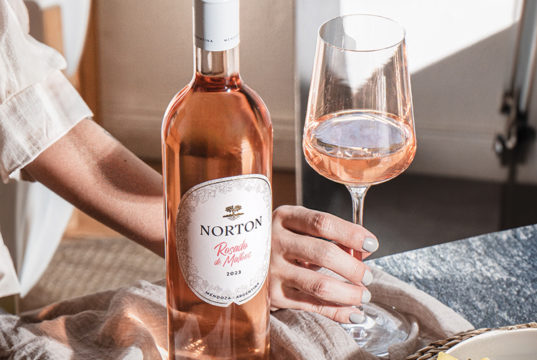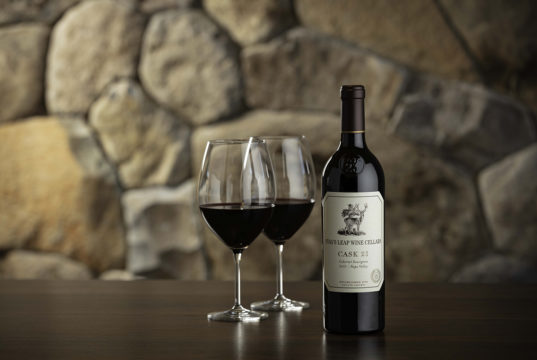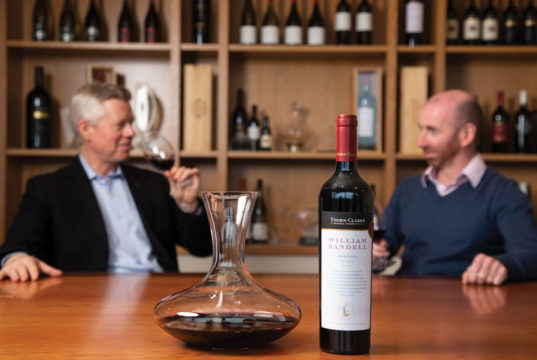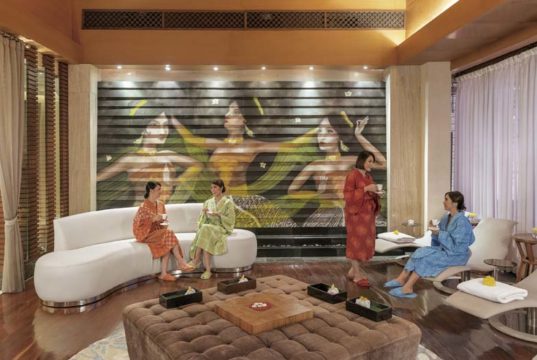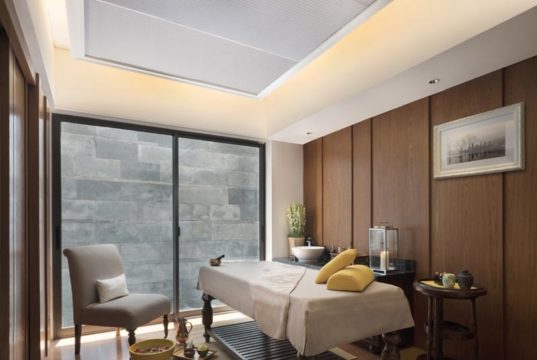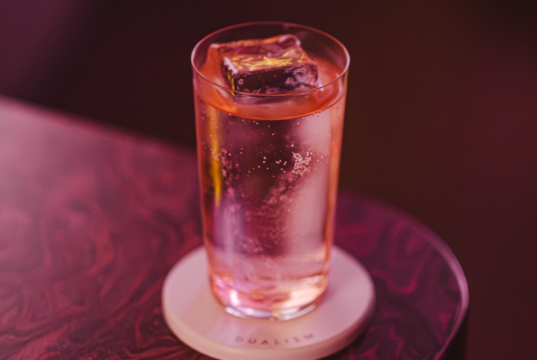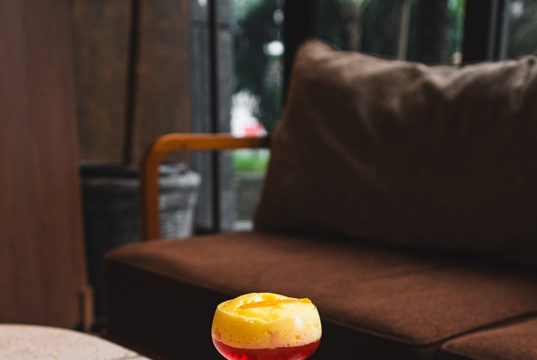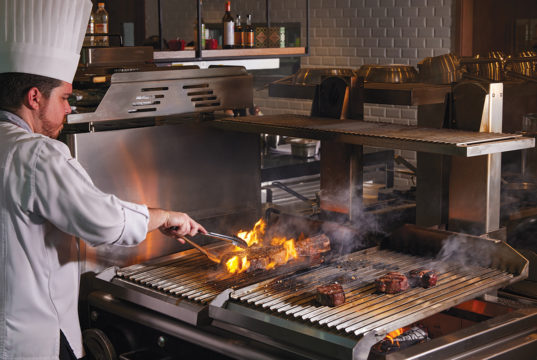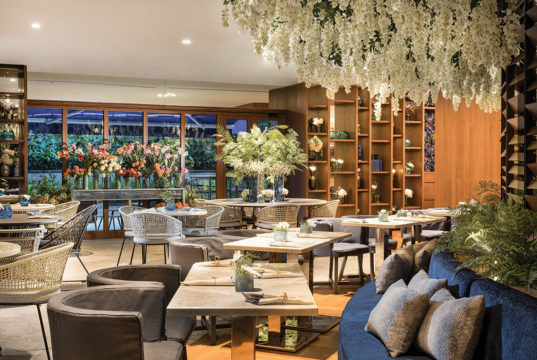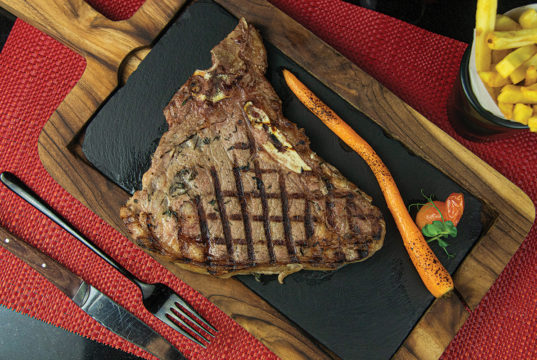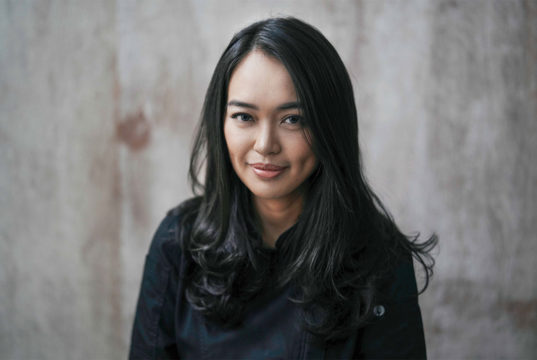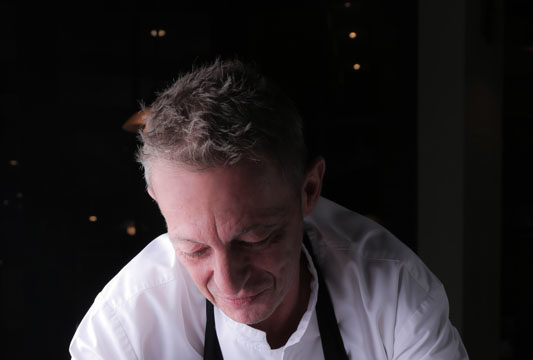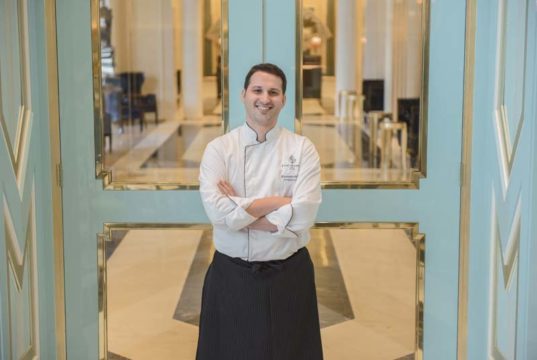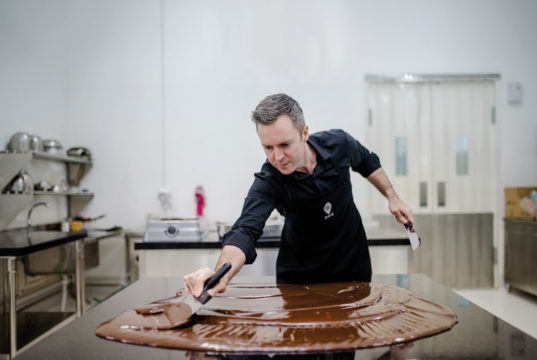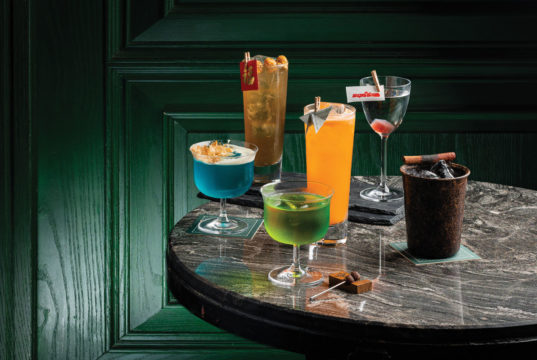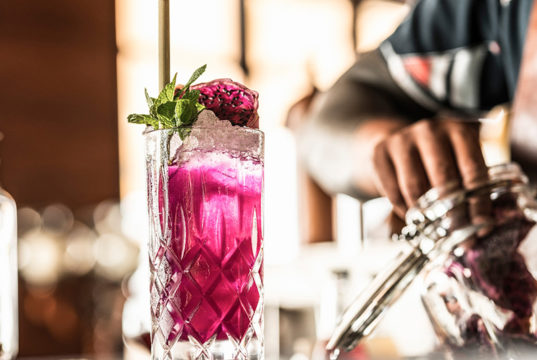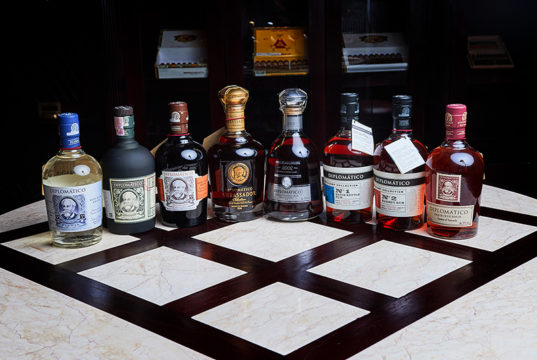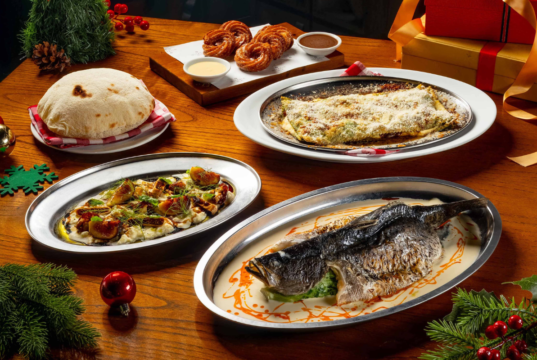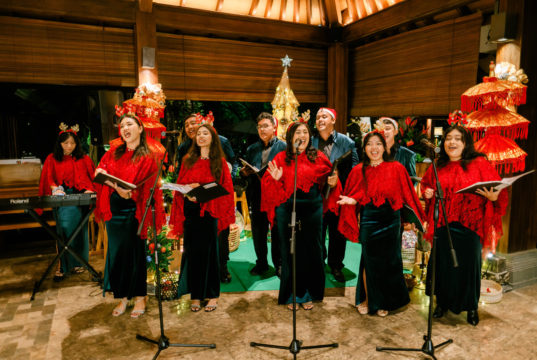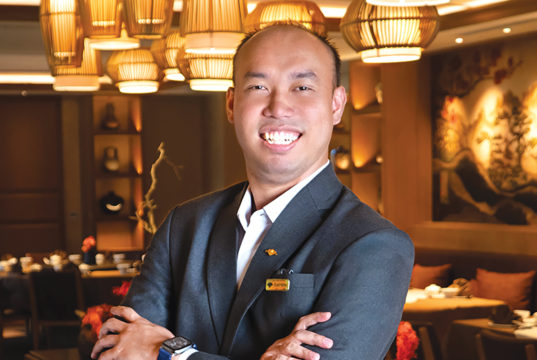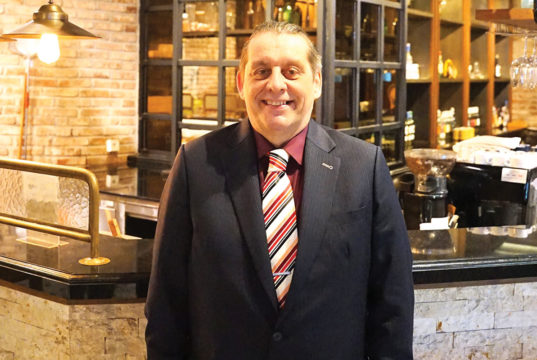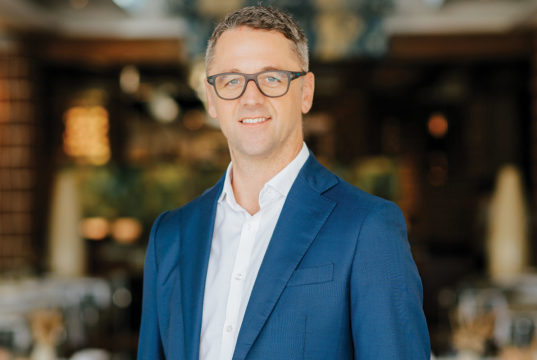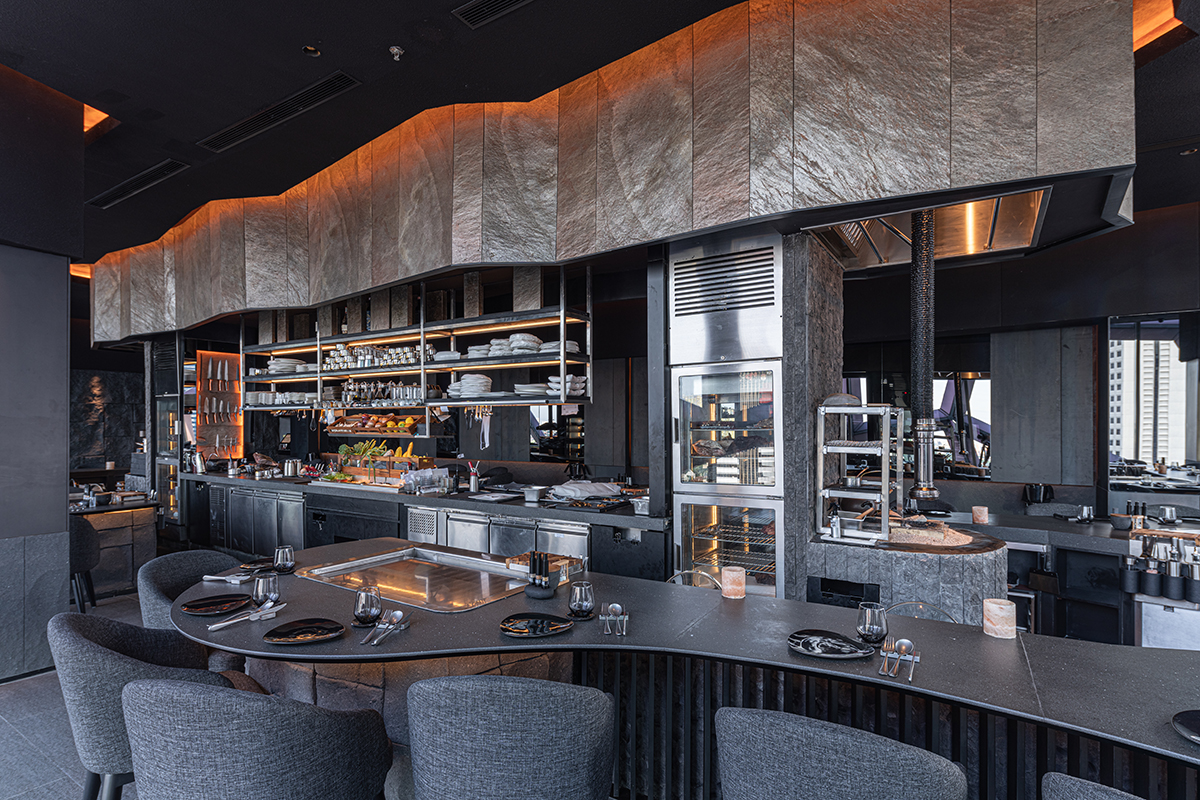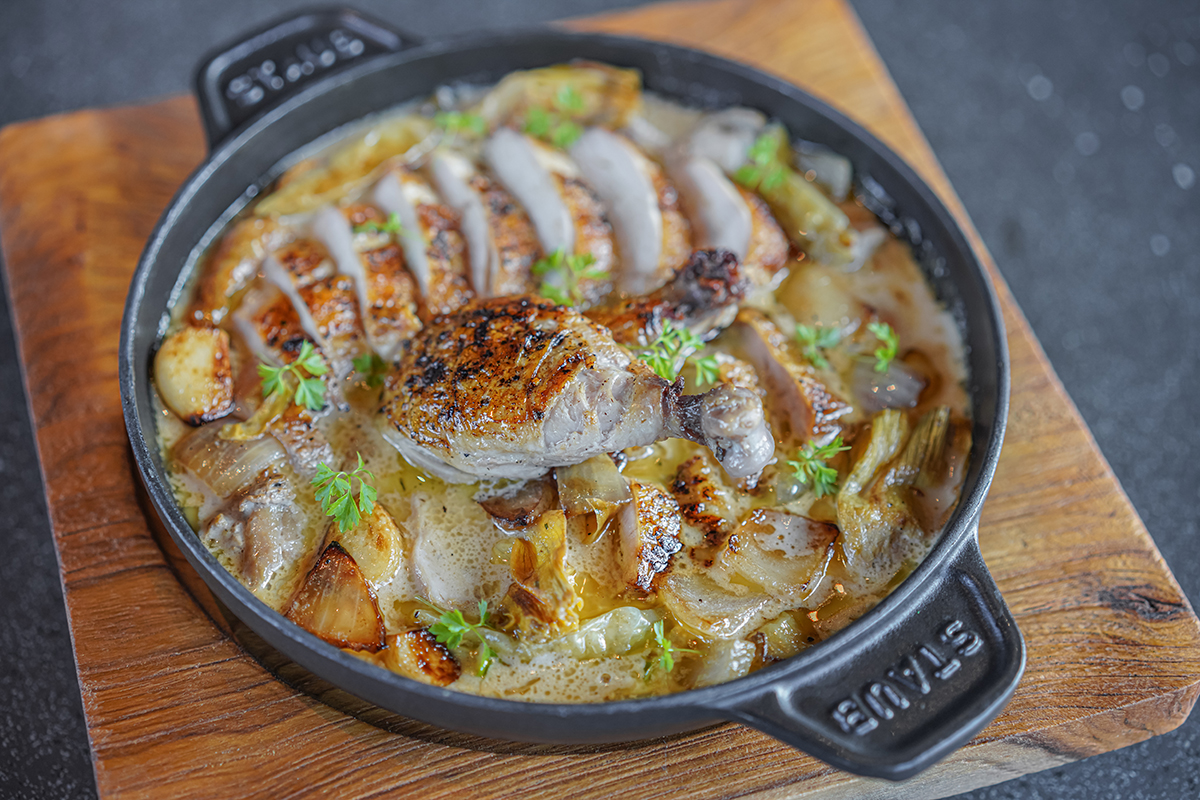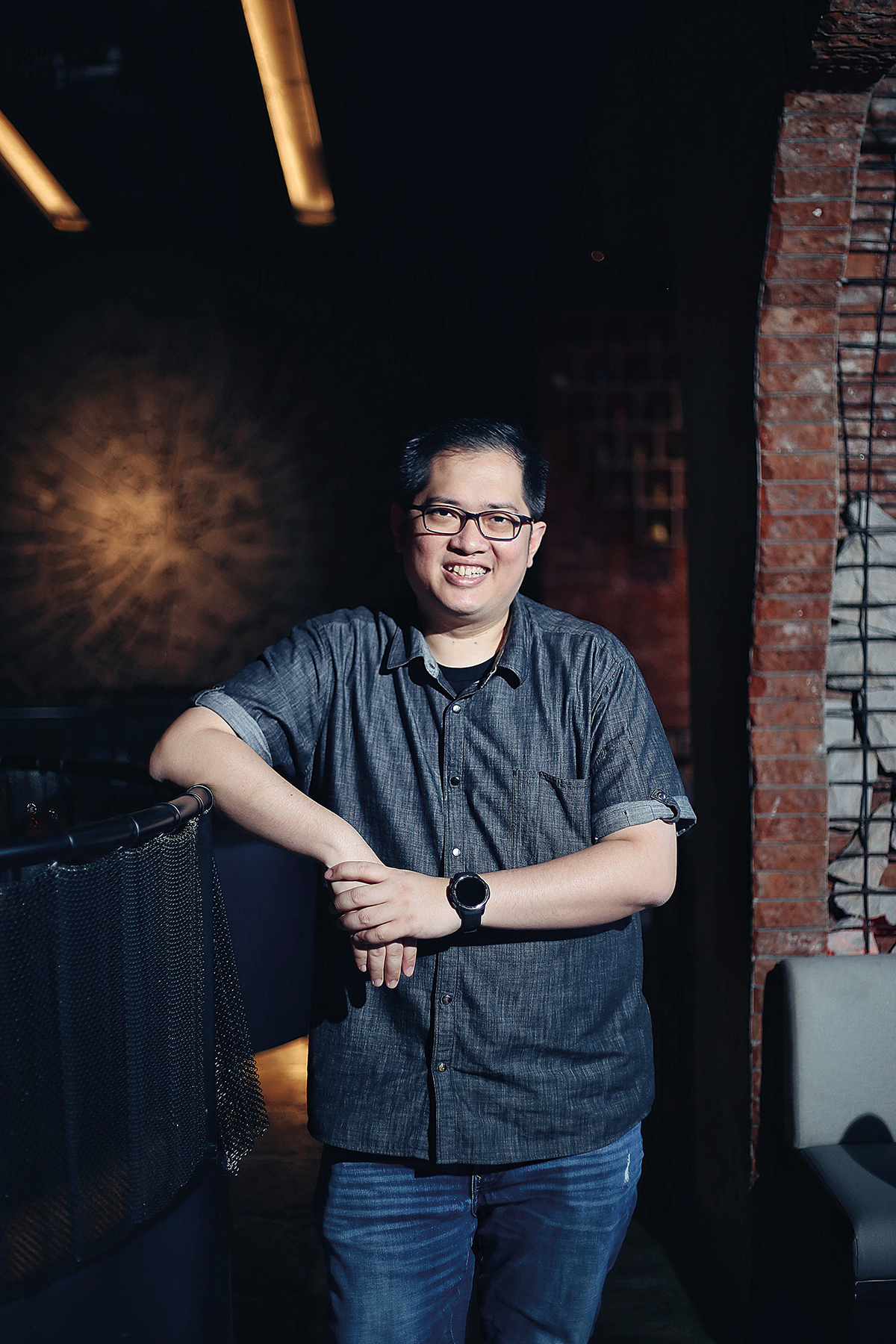
Talking to Chef Andri Dionysius is like hanging out with an old friend that you’ve known for many years. He likes to tell stories, crack jokes, throw intriguing questions, give insights and most importantly, keeps the conversation flowing. When the subject is his revolutionary dining collective establishments that is MDA Restaurants, Chef Andri does not pull his stops.
– by Rizki Pradana –
E: Can you tell us about your journey shifting from computer engineering to becoming a distinguished chef, and how it influenced your approach to cuisine and restaurant management?
A: I went to the US for college where I majored in computer engineering. Since college, I always like cooking for my friends – a hobby that then became a routine. My introduction to the world of food and service started when I took my first job as a busboy in a small Japanese restaurant. Along the way I worked in different kitchens. I fell for it and then asked my family if I could continue my studies to culinary school.
So I enrolled and got my eyes opened even wider. I love problem solving. The reason that I took computer engineering was because back home I enjoy to construct my own computer – often from scratch. When I went to culinary school, I found that it’s quite similar. Computer engineering was all about projects, it was about knowing what each thing was, putting them together and knowing which works with which. In the end it’s pretty much like cooking. The logic behind computers works in the kitchen as well. And since I love looking, as well as problem solving and making people happy, I’m willing to do this everyday for the rest of my life. Everything else just follows.
E: Having worked and opened restaurants in global capitals like New Delhi, Singapore and Dubai, how do you ensure consistency and adaptability across different cultural and culinary landscapes?
A: For me, all those countries and restaurants are just portfolio – I see them as experience. Certainly, the experience of opening restaurants in many parts of the world also comes with different local cultures – they all have different habits. The way I approach people also has to be different, I can’t be too straightforward. You have to learn slowly and understand the people. Bear in mind, that it also has to go both ways – because a kitchen is not a democracy. It’s a dictatorship.
E: Can you share the inspiration behind establishing MDA Restaurants and the unique characteristics of each of your restaurants, such as Animale, Aged + Butchered, Carbón, Wabi-Sabi and Ironplate?
A: Right now, I have five restaurants, which I can proudly say my Pancasila. Each and every one of them represents different stories in my culinary journey.
Wabi-Sabi came from my background at the beginning, which was Japanese style. I managed to work my way up in the kitchen hierarchy to finally be stationed at the very privileged sushi bar. It was during this period that I was introduced to the teppanyaki concept – we’ll get there later.
During my 14 years working in the US, all the kitchen workers are Hispanics. I became good friends with them. They bring me to their house, go to their daughters’ quinceaneras, meet their abuelitas, eat their food, help them prepare the food and learn the stories behind them. I feel the love of the community from those experiences. That was where Carbón came from.
Ironplate is a blend of classic French and Japanese teppanyaki, which came from my experiences of working in a Japanese kitchen while at the same time studying in a culinary school. Around the world, teppan has become an attraction, whereas the original concept was all about the ingredients. The French has their own version of flat-top grill, but it was only for pots and pans. I thought, why not blend both of them?
Animale is Italian, and I have a very specific memory about this. On my first day of culinary school the professor asked everyone to make pasta carbonara – from scratch. I followed the recipe to the dot, tried it and immediately fell in love with the wonderful and boundless world of handmade pasta. Before that moment, I only knew pasta from Pizza Hut! I was so influenced that day, the following day I bought myself a pasta machine.
Aged + Butchered is probably the most rustic and primal. Not because it serves premium cut steaks, but because it represents any chef that has worked as a line cook, wishing every single day to be assigned the grill. That connection between man, fire and meat will light up forever.
Chicken Fricasse from Ironplate
Ingredients
- Halved whole chicken, pat dry the skin
- 65g garlic
- 35g onion, diced
- A sprig of rosemary
- 2 sprigs of thyme
- 50ml sake
- 250ml chicken stock
- 10g ponzu
- 30g artichoke
- 10g picked chilies
- 30g unsalted butter
- 20g crème fraîche
- Cooking oil
- Salt and pepper to taste
- All-purpose flour
METHOD
- Season chicken and dust with flour.
- Heat pan with oil and sear skin side down.
- Add garlic, onion and herbs. Cook until fragrant. When the skin turns golden, flip the chicken.
- Add chillies and deglaze the pan with sake. Reduce for five minutes, then add chicken stock, ponzu and artichoke.
- Cover the pan and cook chicken on low for about 25 minutes.
- Season to taste, finish with butter and crème fraîche. Best served with toasted baguette and yuzu juice to add zest.
Exquisite Taste Volume 43
MDA Restaurants
MD Place
Jl. Setiabudi Selatan no 7
IG: @mdarestaurants




